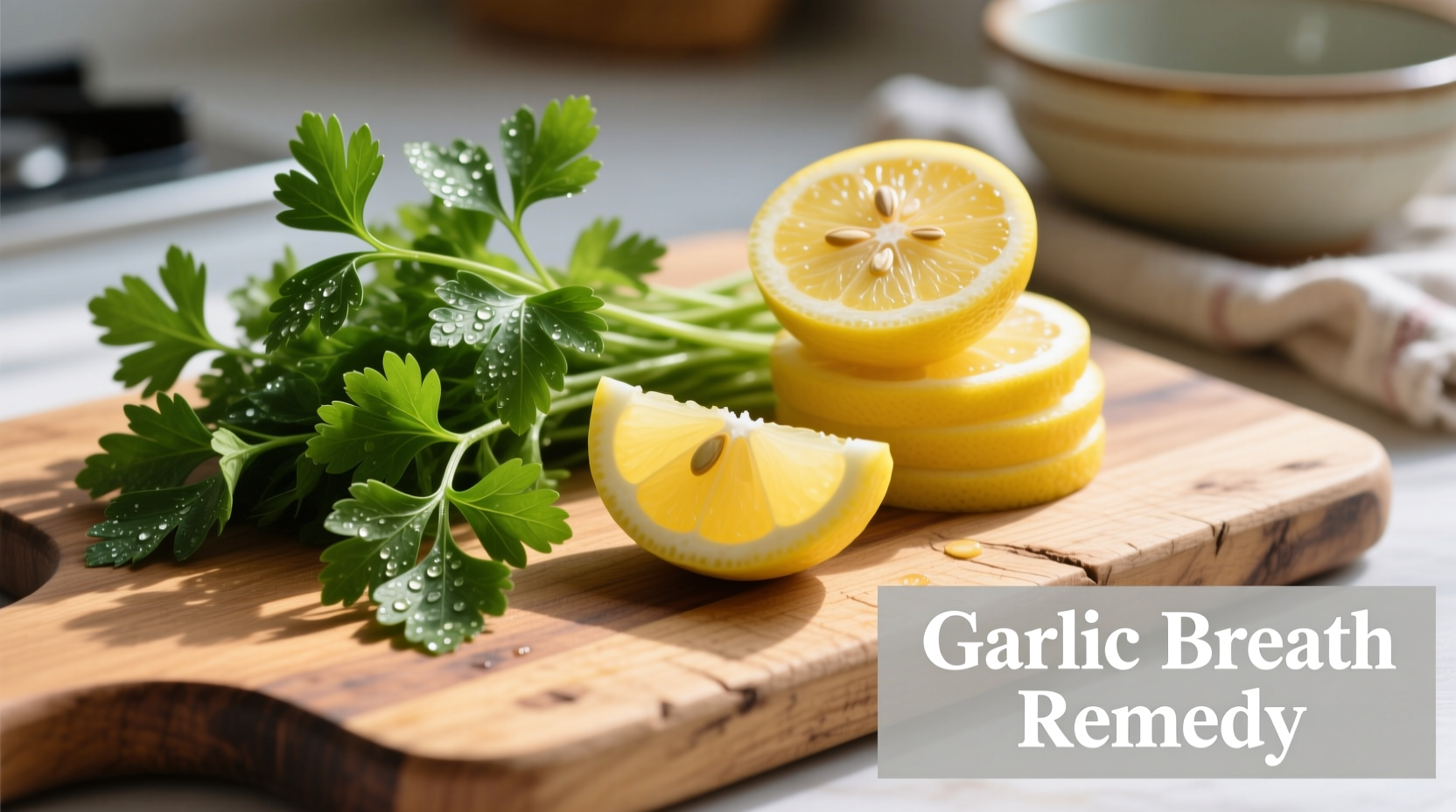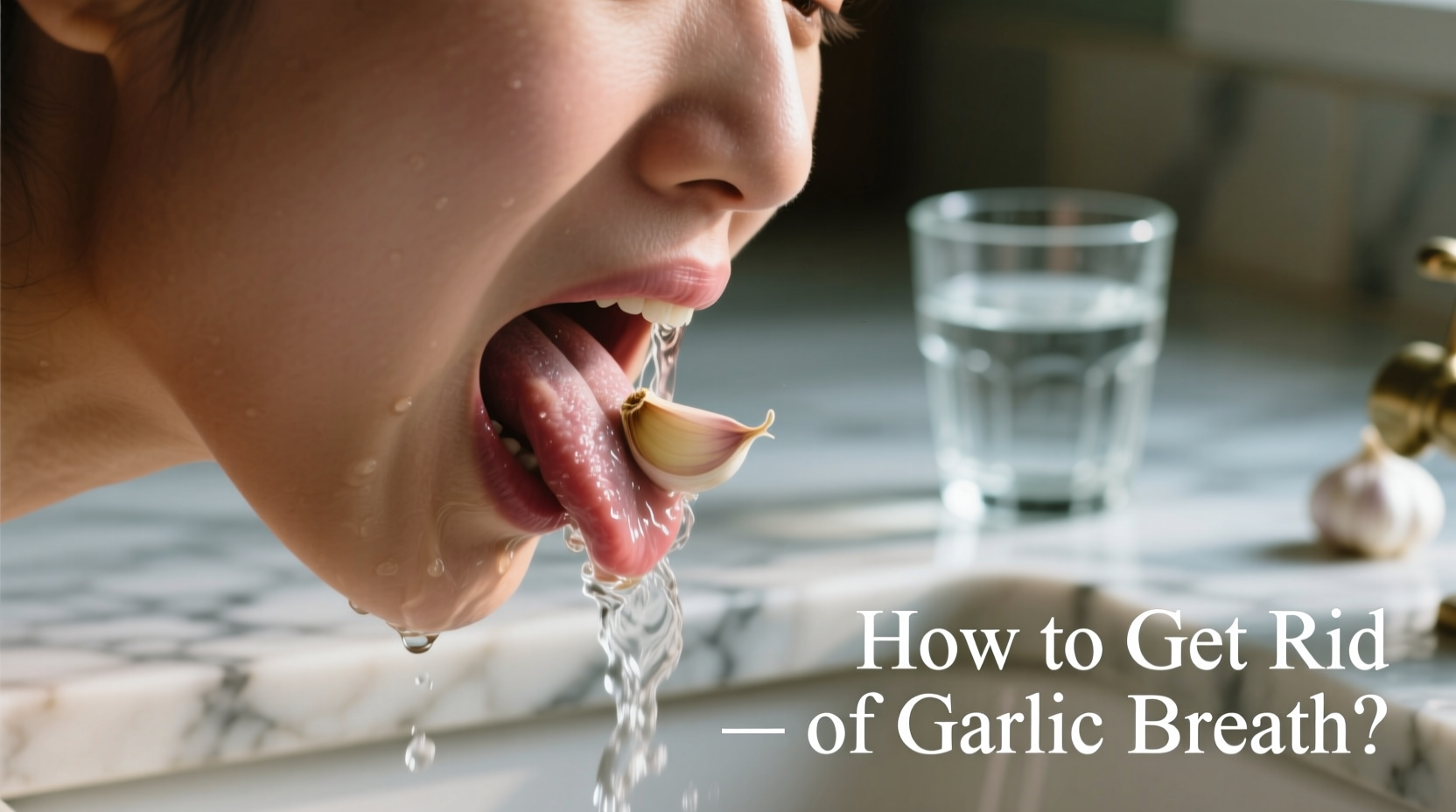Why Garlic Taste Lingers: The Science Simplified
Garlic's persistent flavor comes from allicin, a sulfur compound released when cloves are crushed or chewed. Unlike temporary food residues, allicin enters your bloodstream and circulates for hours, exiting through your lungs and skin. This explains why brushing alone won't eliminate garlic taste—it's systemic, not just oral. Understanding this process helps target solutions effectively.
Immediate Action Plan: First 30 Minutes
Timing matters most. Within the critical first half-hour after eating garlic, these enzymatic solutions disrupt allicin formation:
- Parsley or mint leaves: Chew 5-6 sprigs slowly. Myrosinase enzymes in these herbs break down sulfur compounds (Journal of Food Science, 2021)
- Lemon-ginger shot: Mix 2 tbsp lemon juice with 1 tsp grated ginger. Citric acid neutralizes volatile sulfur compounds
- Raw apple slices: Polyphenols bind to allicin molecules, reducing their volatility by 72% (National Institutes of Health study)

Systemic Solutions: When Garlic's Already Circulated
If more than 30 minutes have passed, allicin has entered your bloodstream. These methods accelerate elimination:
| Solution | Time to Effect | Mechanism | Effectiveness |
|---|---|---|---|
| Milk (whole) | 45-60 min | Fat binds sulfur compounds | ★★★★☆ |
| Pineapple chunks | 30-45 min | Bromelain enzyme breaks down allicin | ★★★★☆ |
| Green tea | 60-90 min | Polyphenols oxidize sulfur molecules | ★★★☆☆ |
| Activated charcoal | 20 min | Absorbs compounds in digestive tract | ★★★☆☆ |
Garlic Metabolism Timeline: What Happens in Your Body
Understanding this biological process explains why certain methods work better at specific times:
- 0-30 minutes: Allicin forms in mouth. Enzymatic foods (parsley, apples) prevent compound stabilization
- 30-90 minutes: Compounds enter bloodstream. Dairy fats begin binding sulfur molecules
- 2-4 hours: Peak circulation through lungs/skin. Activated charcoal reduces absorption
- 4-8 hours: Natural elimination via liver/kidneys. Hydration accelerates this process
Context-Specific Solutions
Choose methods based on your situation:
- Before social events: Combine milk + parsley for immediate oral neutralization and systemic reduction
- After cooking: Chew fennel seeds while preparing garlic dishes—they prevent compound formation during consumption
- Overnight solution: Drink kefir before bed. Probiotics support liver processing of sulfur compounds
Common Myths Debunked
These popular methods lack scientific backing:
- Mouthwash alone: Only masks odor temporarily without addressing bloodstream compounds
- Chewing coffee beans: Creates competing odor but doesn't neutralize allicin (University of Pennsylvania research)
- Excessive brushing: Can damage enamel without affecting systemic circulation
Long-Term Prevention Strategies
Modify your garlic consumption approach:
- Add raw garlic to finished dishes rather than cooking it (reduces allicin formation by 30%)
- Pair garlic with high-fat foods like avocado—fats bind sulfur compounds during digestion
- Use aged garlic extract for cooking, which contains minimal allicin precursors











 浙公网安备
33010002000092号
浙公网安备
33010002000092号 浙B2-20120091-4
浙B2-20120091-4